Unnan City in Shimane Prefecture is awash in color from late February until the end of April, with numerous varieties of sakura, making it one of the most popular hanami (cherry blossom viewing) spots in the region. The city comprises the smaller towns of Kisuki, Mitoya, Daito, Kakeya, Kamo, and Yoshida, each rich in nature, cultural heritage, and ancient mythology. Even the sakura trees in Unnan have a storied history.
After listening to a local grandmother reminisce about the history of the city’s sakura, I began to understand the many trials and tribulations the trees have faced over the years—only to persevere and become a beloved local treasure.
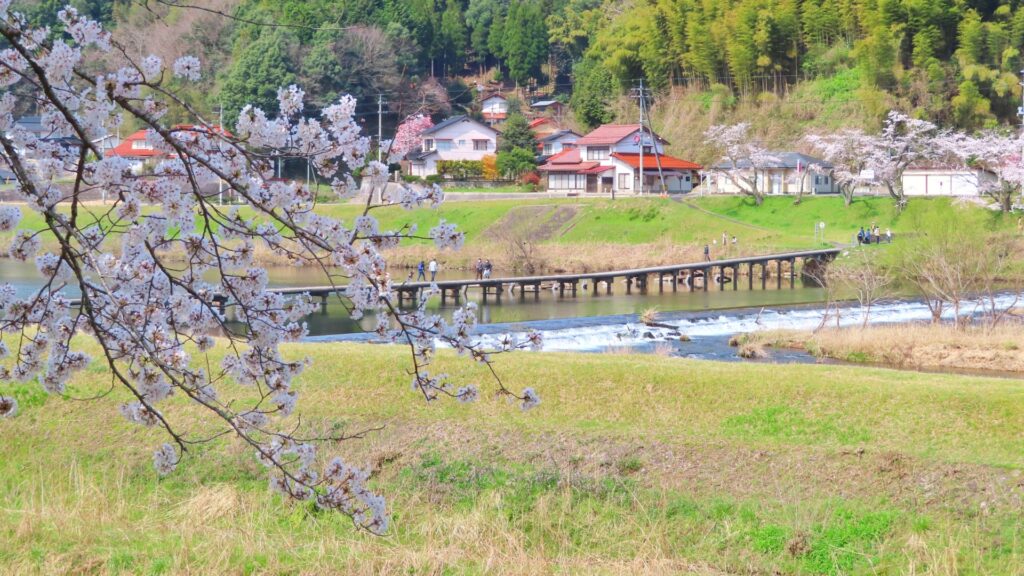
Unnan’s sakura story: Preserved through war, nurtured across generations
Sakura tree planting in Unnan began during the Meiji Period (1868 – 1912) and continued through the Taisho and Showa eras. During this time, local students and townspeople lovingly tended the trees, marking each one with the names of its caretakers. However, during World War II, the government, in desperate need of firewood, ordered the trees to be cut down and donated to the war effort. Understanding how much the trees meant to the townspeople, the mayor refused, insisting they remain as a familiar and comforting sight for young soldiers returning home. Seeing his determination, neighboring villages stepped in, donating firewood from their own lands instead, ultimately saving the cherished trees from destruction.
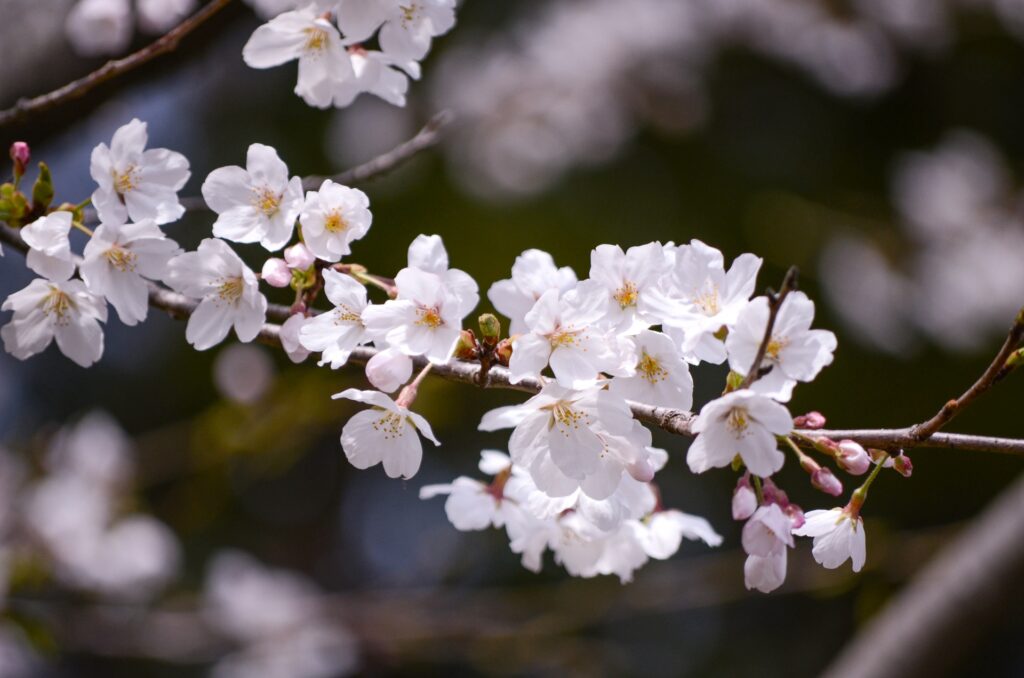
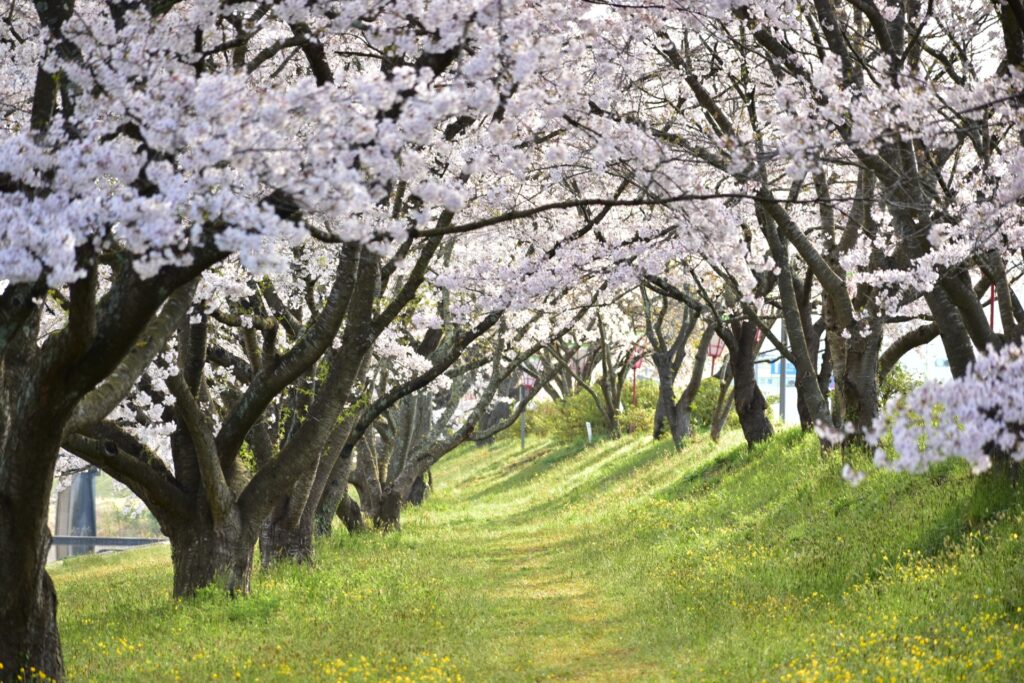
The average lifespan of the Somei Yoshino sakura, the most popular and common variety in Japan, is estimated to be around 30 to 40 years. However, some trees in Unnan are nearly 80 years old. This remarkable longevity would not be possible without the dedication of Sakura Mori, a group of over 800 locals who tend to the trees through tasks such as fertilizing, weeding, pruning branches, and exterminating pests. These caretakers diligently watch over the trees 365 days a year, ensuring that visitors can enjoy their fleeting beauty every spring.
Hii Riverbank: Picnics, yummy treats and twilight sakura bliss
In the Kisuki area of Unnan, over 800 Somei Yoshino trees line the Hii Riverbank. Rated one of Japan’s Top 100 Cherry Blossom Spots, these trees create a picturesque canopy stretching nearly two kilometers. Find a spot beside the river to lay down a blanket and enjoy a picnic, or take a leisurely stroll beneath the blossoms while sampling food from the many yatai (street food stalls) that line the sidewalk during peak season.
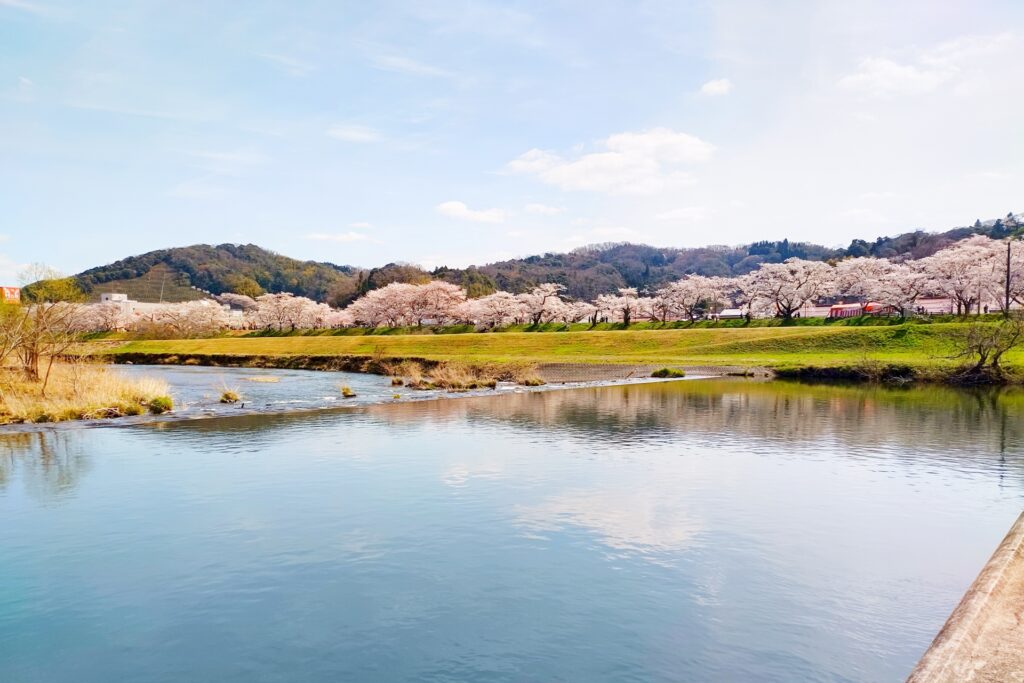
My favorite festival treat is taiyaki, a fish-shaped cake traditionally filled with sweet red bean paste. I also recommend trying the custard-filled and chocolate-filled versions when available.
After sunset, experience the ethereal beauty of yozakura (nighttime sakura) as the trees are illuminated with lanterns until around 11PM each night. Peak viewing season is from late March to early April.
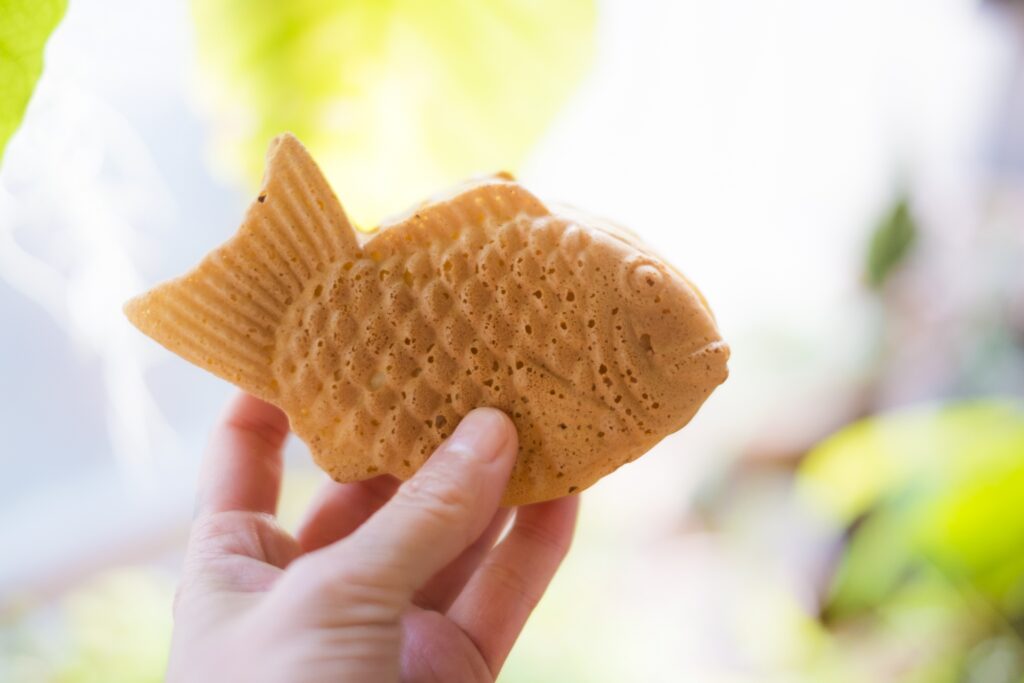
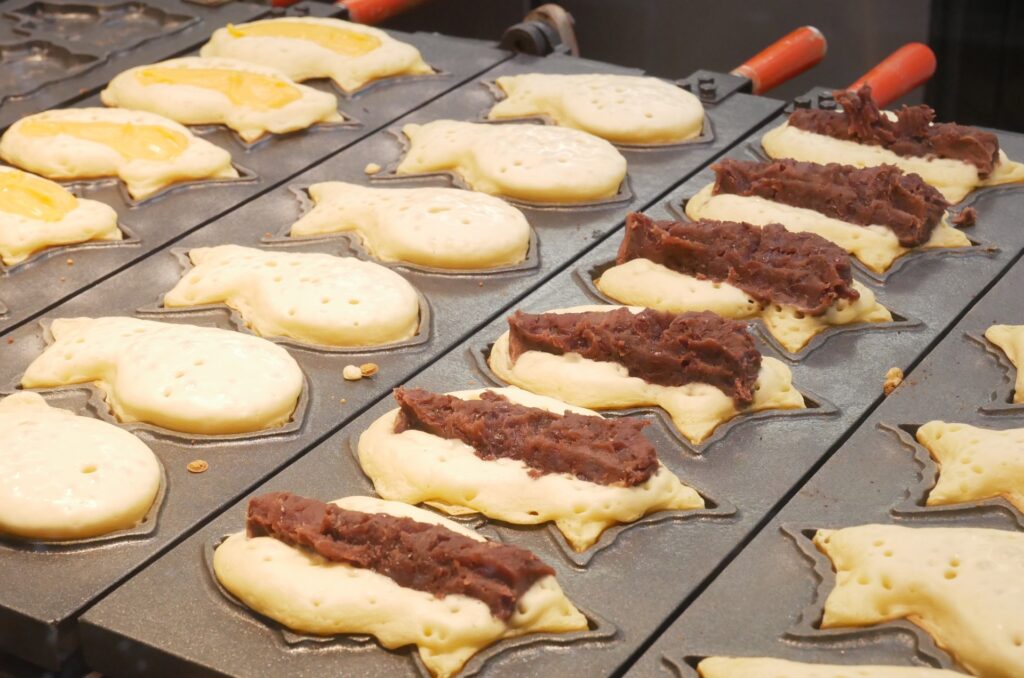
Mitoya Riverside Park: Home to a rare sakura that transforms from pale green to blush pink
Another popular spot for hanami is Mitoya Riverside Park, where you can see Gyoiko-zakura from mid-to-late April. This rare green variety of sakura takes its name from gyoi, the garments worn by nobility in ancient times. These robes were often dyed moegi, a traditional Japanese color—a bright yellow-green said to resemble young leaves in early spring.
As the season progresses, the green petals of Gyoiko-zakura gradually fade, revealing delicate pink stripes that emerge from the flower’s center. This unique sakura belongs to the yaezakura family, known for its multiple layers of petals.
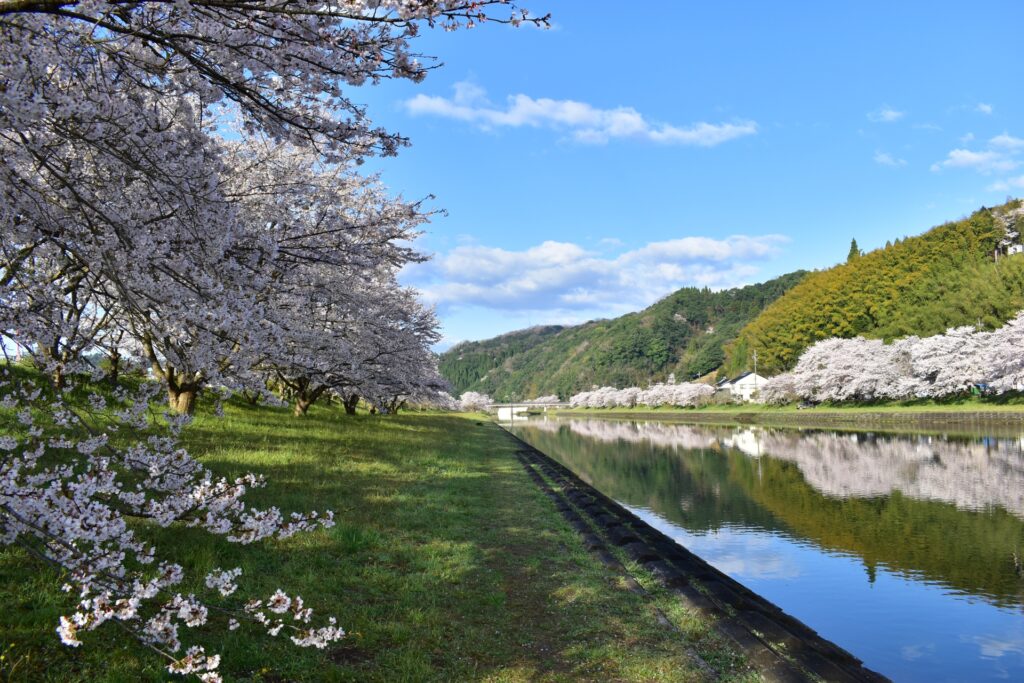
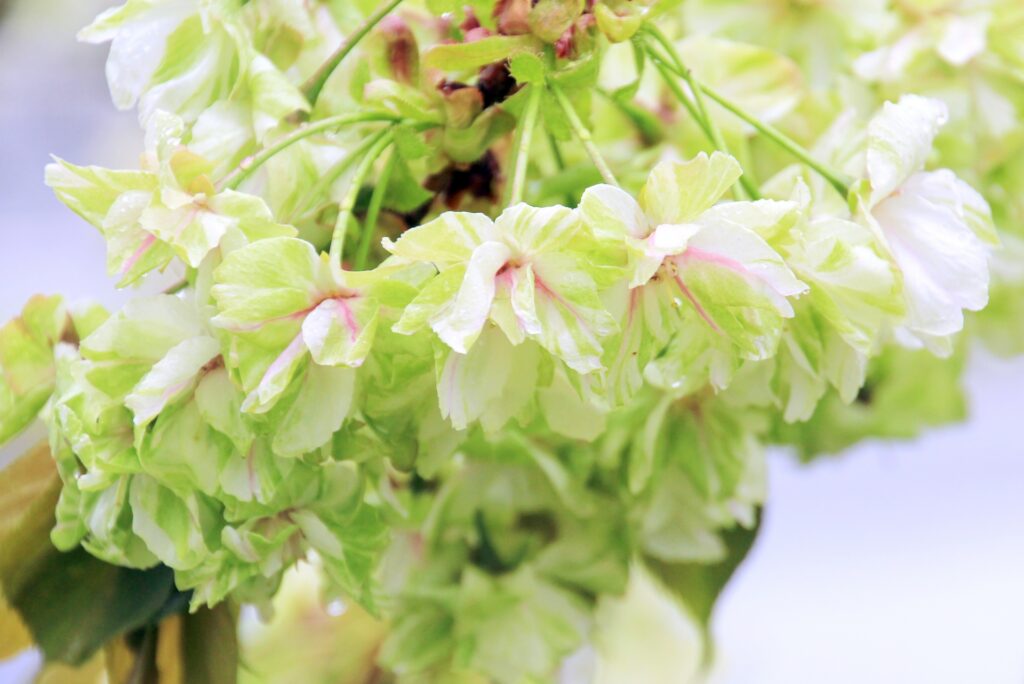
Tips and information
Peak viewing time varies each year, so for the most up-to-date forecast, check hanami tracking websites like Walkerplus, where you can view current flowering data and track crowd levels in real-time. Both Hii Riverbank and Mitoya Riverside Park are accessible via Kisuki Station. Parking is available at both locations, but traffic congestion is common during peak season, so plan accordingly.
